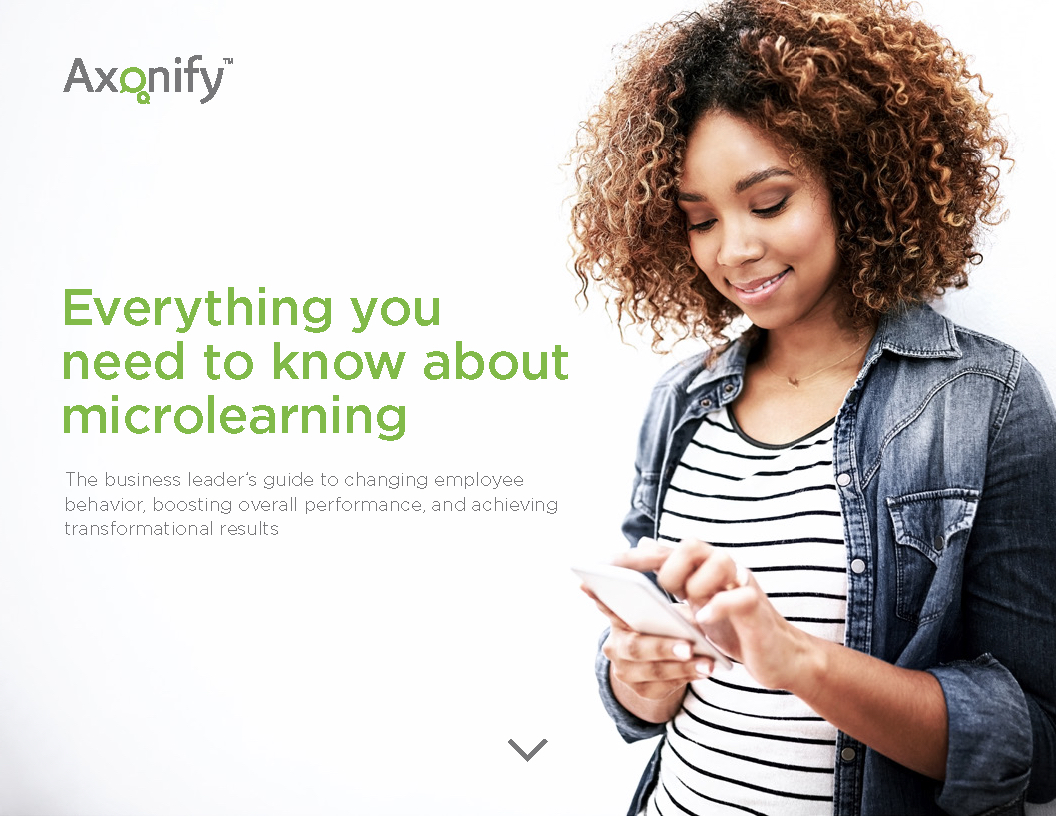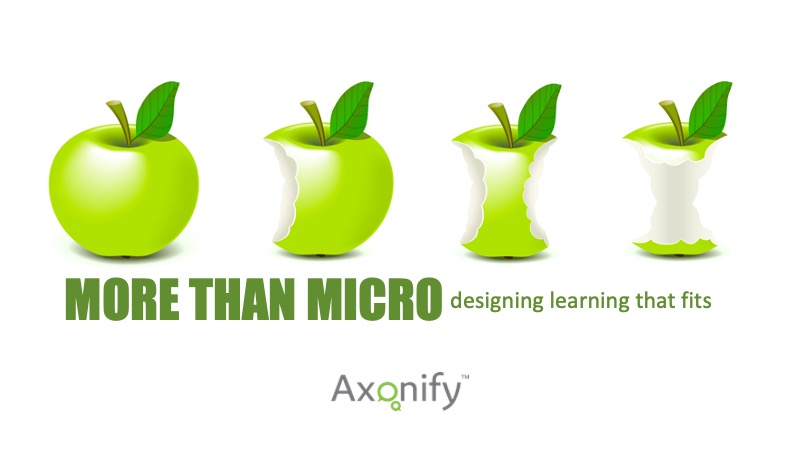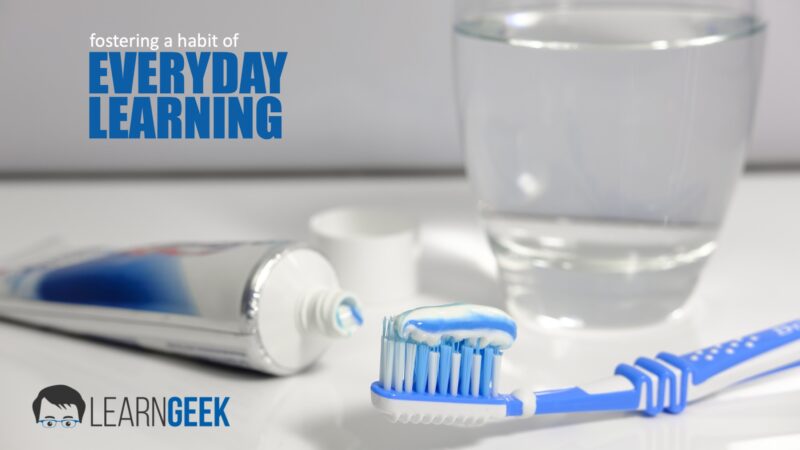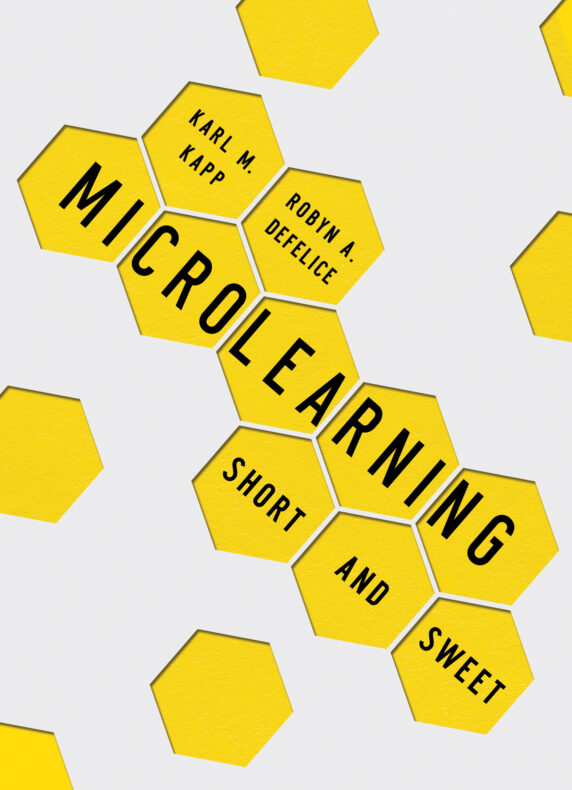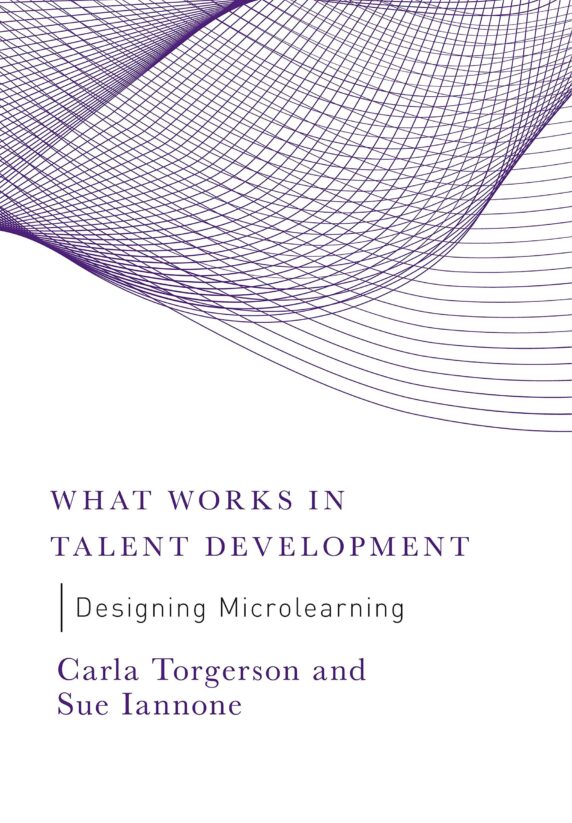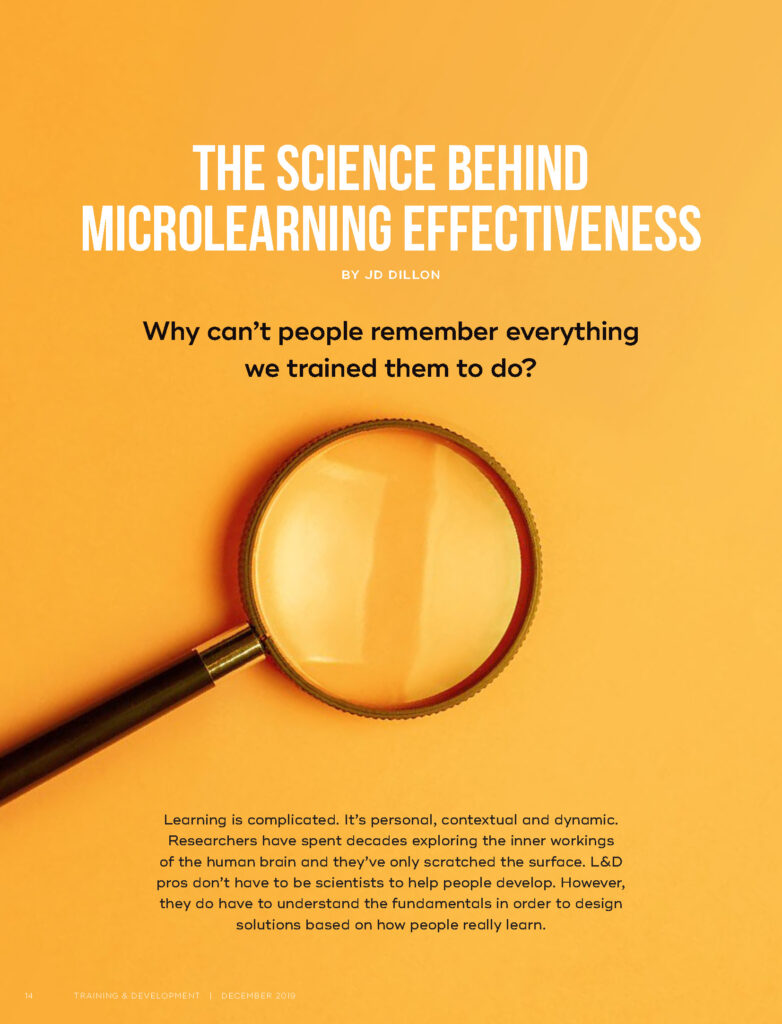
Microlearning continues to be a popular conversation topic with learning professionals. Proven microlearning principles are helping organizations transform the way they support and enable people. But there's also plenty of hype, confusion and misinformation on the subject.
LearnGeek curates this resource page to help learning pros break through the noise and find ways to make microlearning fit within their organizations. Have a resource you'd like us to add? Get in touch with JD!
eBook
The Ultimate Guide to Microlearning (2018)
Written by JD in collaboration with Axonify, Everything you need to know about microlearning busts the biggest myths surrounding the trend, provides a simple definition unpacked into a set of guiding principles and helps you kickstart your evolved L&D strategy.
This PDF eBook includes a quick evaluation to help you determine if microlearning is a good fit for your company as well as a vendor selection guide to help you ask better questions during the exploration process.
You can also find an updated version of this digital content at axonify.com/microlearning.
Presentations
More Than Micro - Designing Learning That Fits
Learning is a critical part of the workplace experience. As business disruption and technology continue to change how work is done, people must constantly rebuild and refresh their job skills. However, we can only learn so quickly and retain so much information. Plus, people don’t have a lot of extra time in their busy schedules to dedicate to learning. How can L&D avoid force-feeding people and help them develop just the right skills at the right time?
This session includes an in-depth exploration of microlearning. We review critical principles that will help you reimagine your learning ecosystem. We teach you how to design solutions that “fit” within today’s workplace. We discuss the role technology plays in executing a microlearning approach. Finally, we apply microlearning tactics to solve familiar learning and performance challenges.
Fostering a Habit of Everyday Learning
The majority of what we learn comes from practical experience on the job. However, we don’t learn EVERYTHING we need just by doing our jobs. We have to be ready for exceptions when they arise. We need reinforcement of important topics to help us avoid bad habits. We look for opportunities to expand our knowledge and skills beyond our current roles to further our careers. Unfortunately, with limited time and competing priorities, employees are unable to make continuous, targeted learning part of their work.
This session explains how you can embed targeted learning activities into the daily workplace experience. We share tactics for applying common learning science techniques to drive long-term knowledge retention. We demonstrate how familiar tools can be used to promote the habit of daily learning. We share stories from organizations who are realizing measurable business results by helping their employees dedicate just 5 minutes per day to their professional development.
Books
Microlearning: Short and Sweet (2019)
Microlearning. Is it a text message or a video? Does it need to be shorter than five minutes? Do you just “chunk” a longer course into smaller pieces? Find the answers to these and other questions in this concise, comprehensive, and first-of-its-kind resource that will accommodate the most- and least-informed about microlearning.
Gleaning insights from research, theory, and practice, authors Karl M. Kapp and Robyn A. Defelice debunk the myths around microlearning and present their universal definition. In Microlearning: Short and Sweet, they go beyond the hypothetical and offer tips on putting microlearning into action.
Designing Microlearning (2019)
Microlearning is an essential tool that talent development professionals can use to fully engage their learners and tackle organizational performance needs. How do you know if the microlearning approach is successful? And what works?
In Designing Microlearning, part of ATD’s What Works in Talent Development series, experts Carla Torgerson and Sue Iannone answer these questions. This guide for practitioners covers the four main uses for microlearning and introduces MILE, the MIcroLEarning Design model, which outlines the details of creating a microlearning resource or program.
Articles
The Science Behind Microlearning Effectiveness
Source: Training and Development Magazine (Australian Institute of Training and Development)
Published: December 2019
Learning is complicated. It's personal, contextual and dynamic. Researchers have spent decades exploring the inner workings of the human brain and they've only scratched the surface. L&D pros don't have to be scientists to help people develop. However, they do have to understand the fundamentals in order to design solutions based on how people really learn.
Good microlearning solutions don't work just because the content is shorter. They make an impact because they leverage some of the most basic principles of learning science to help people grow their knowledge more quickly and retain it long-term.
- Microlearning: The Misunderstood Buzzword by Shannon Tipton
- Microlearning is just learning that fits. That's it! by JD Dillon
- Definition of Microlearning by Will Thalheimer
- Elephant-Sized Impact by Karl Kapp and Robyn Defelice
- In Defense of Microlearning by JD Dillon
- 7 Deadly Myths of Microlearning by Shannon Tipton
- 7 Myths of Microlearning (but not the same myths from Shannon's article) by JD Dillon
- 9 Ways Microlearning Drives Employee Performance from Axonify
- Microlearning: Advance of Fantasy? by Donald Taylor
- Microlearning, Macrolearning: What Does Research Tell Us? By Patti Shank
- How to build microlearning by JD Dillon
Reports
- 2018 Microlearning Global Benchmark Report (Axonify)
- Microlearning: Delivering Bite-Sized Knowledge (ATD)
- The State of Microlearning (Learning Guild)

